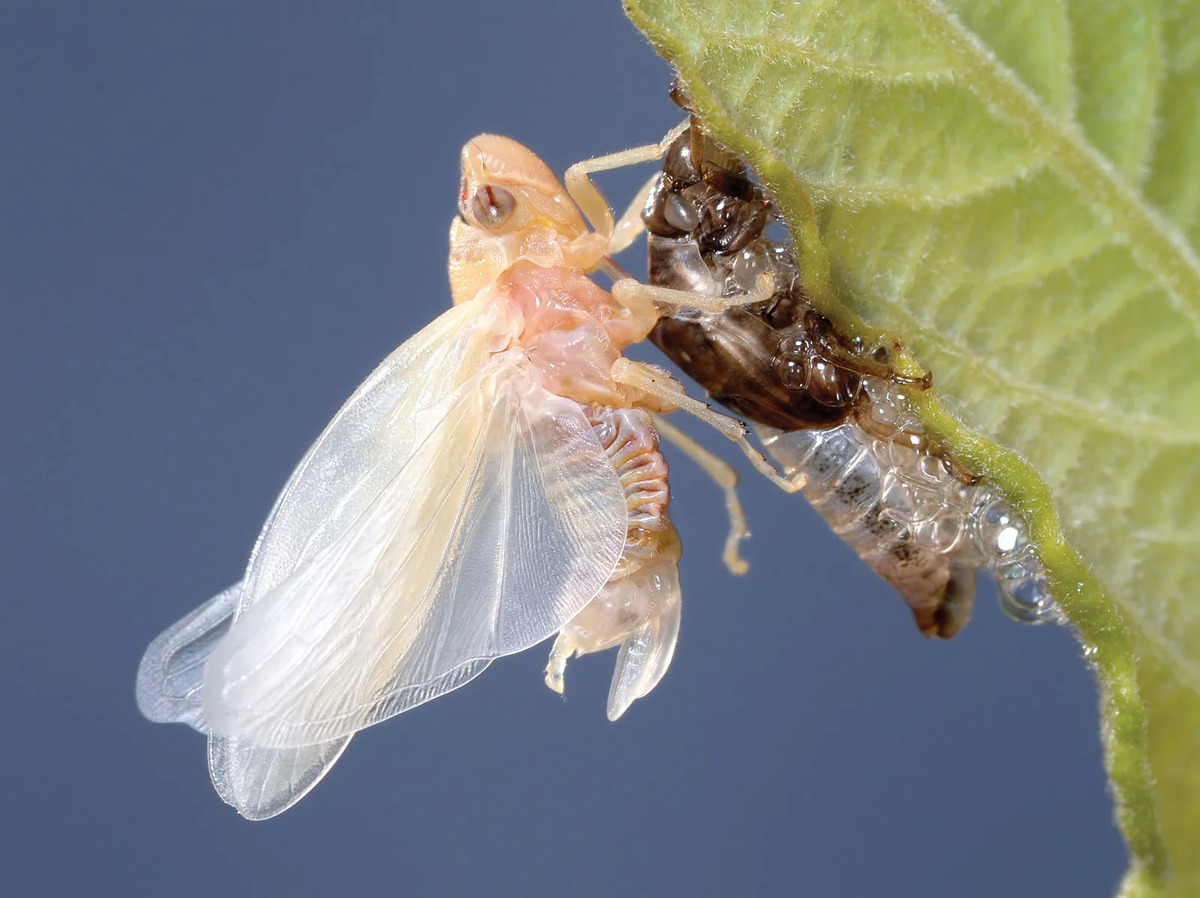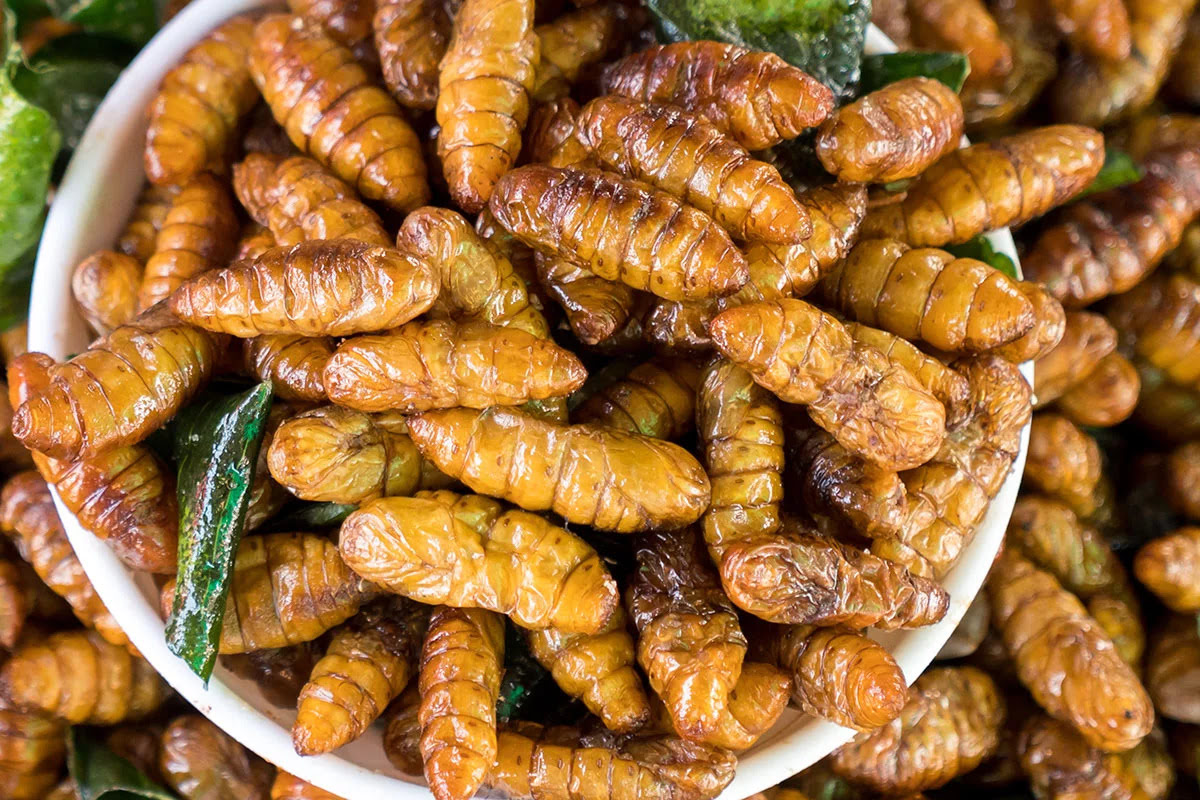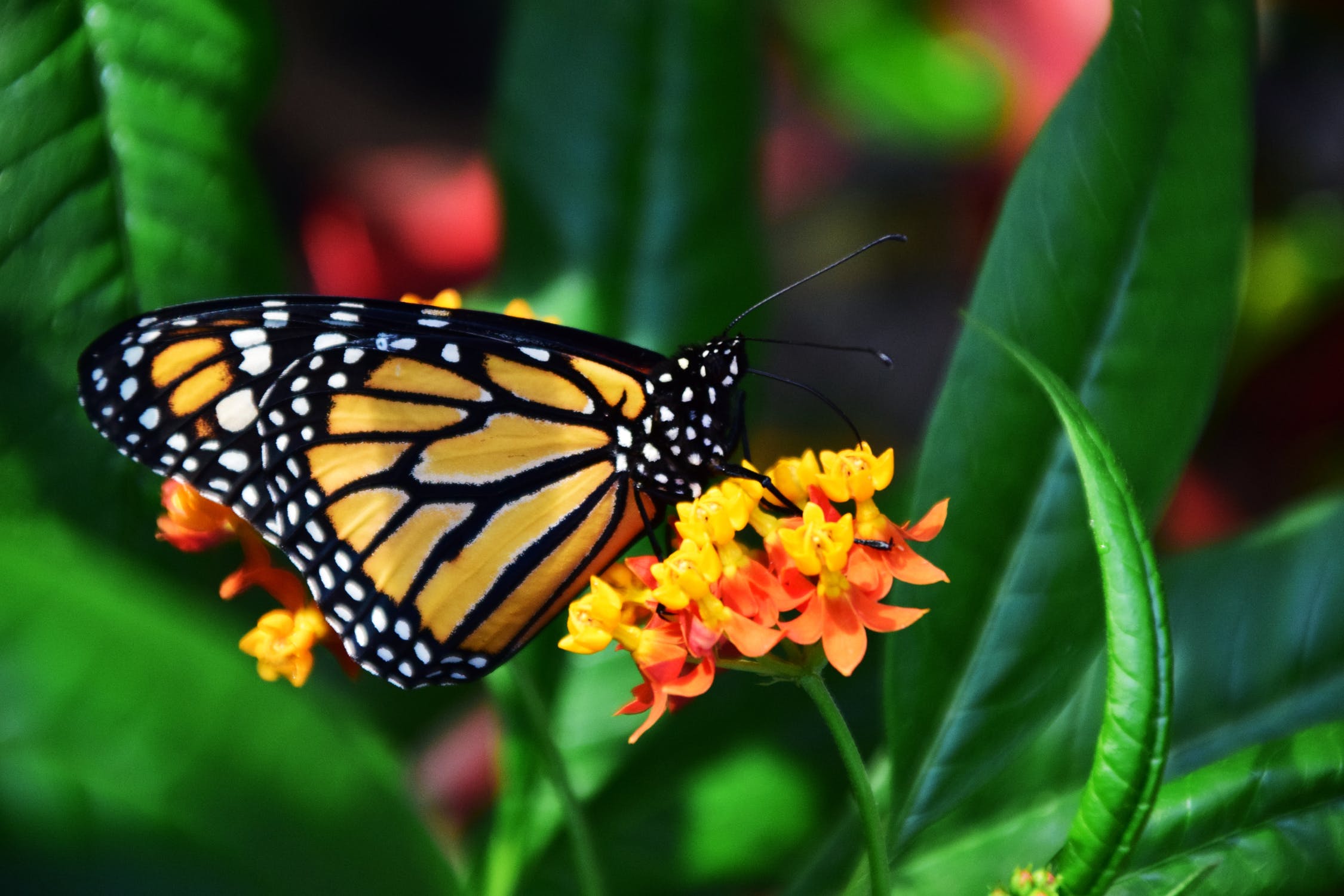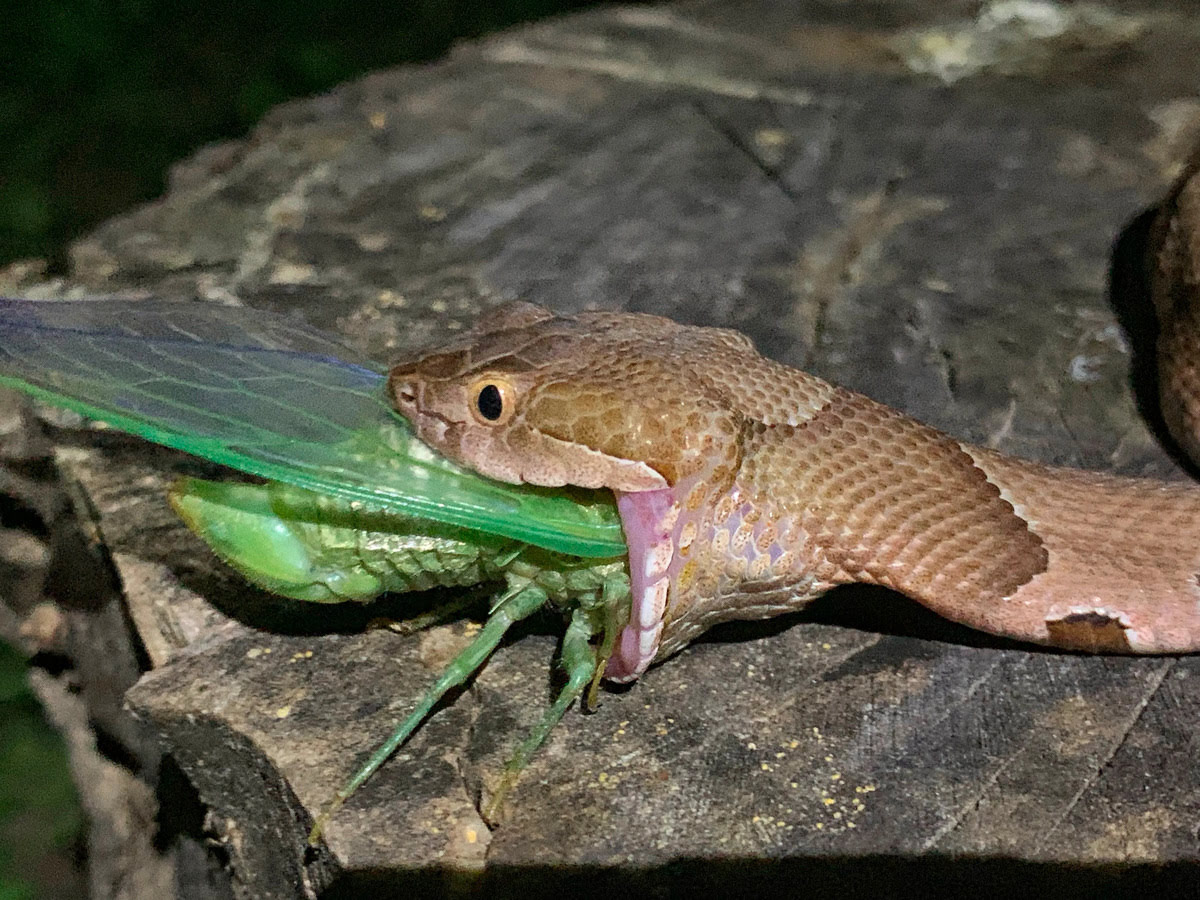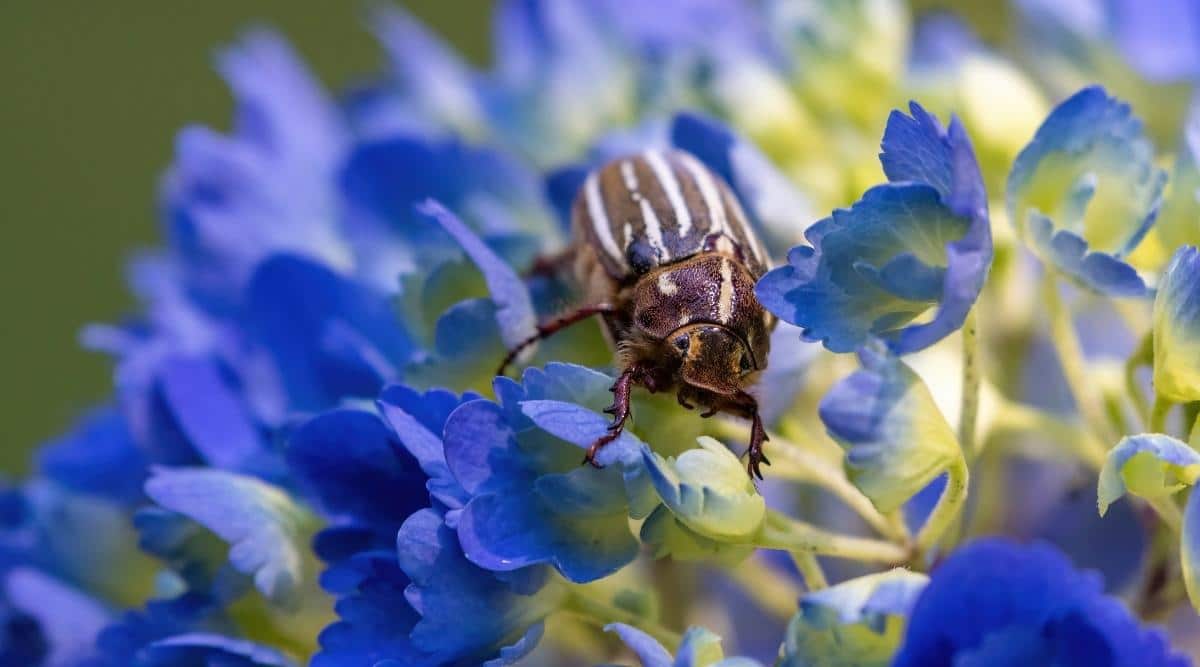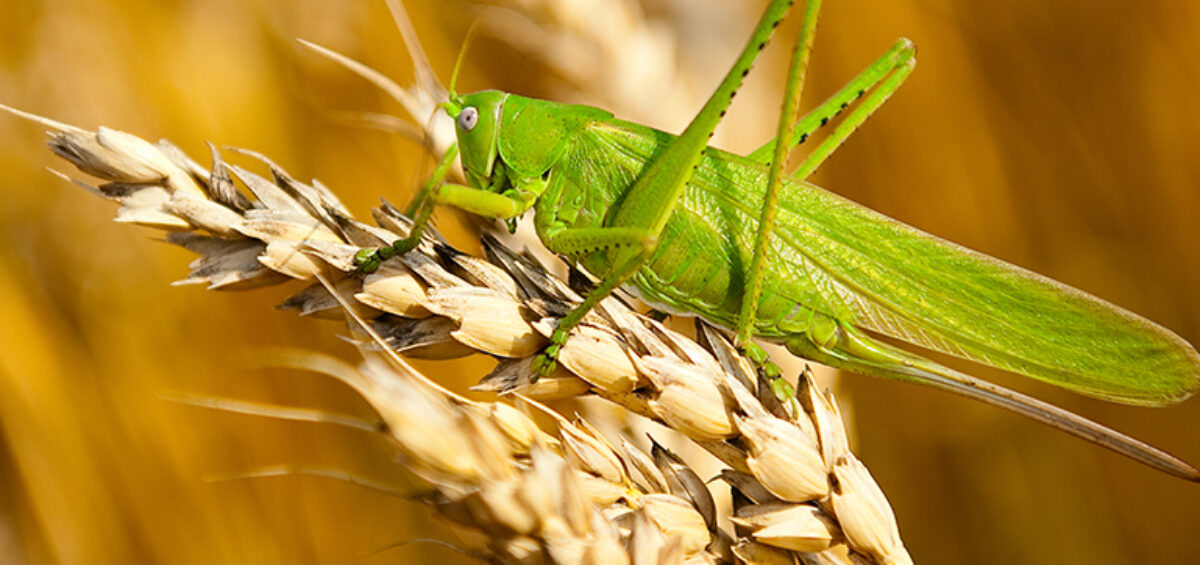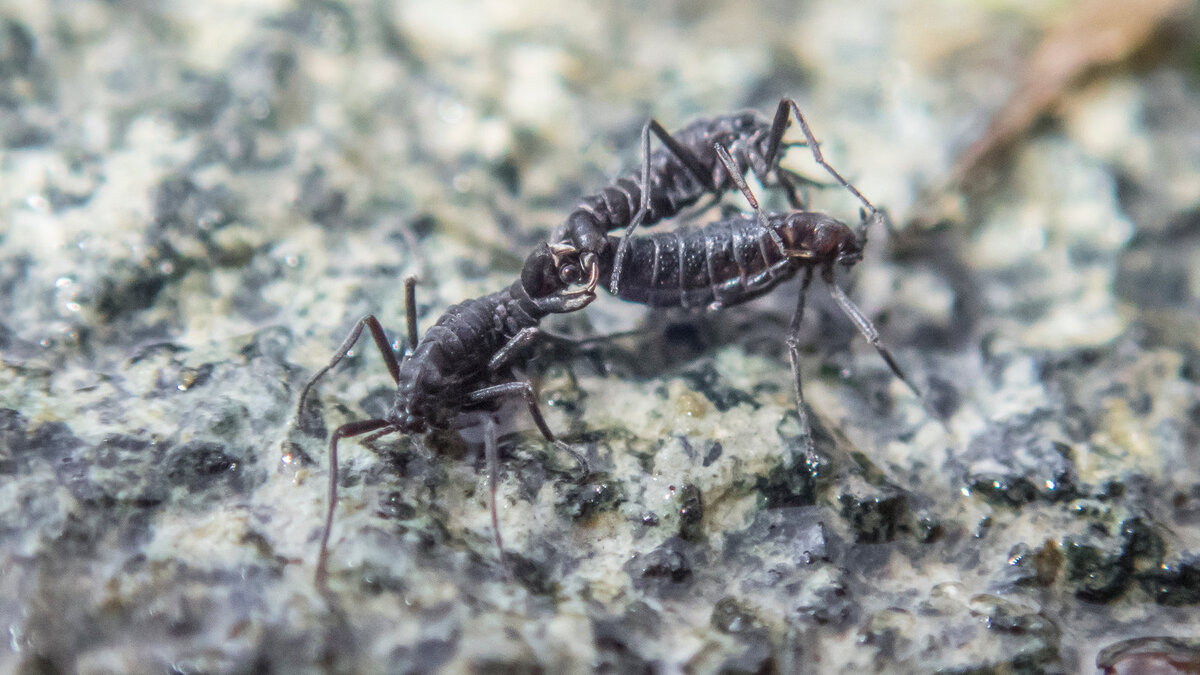Home>Gardening News and Trends>Latest News>What Insects Are Herbivores
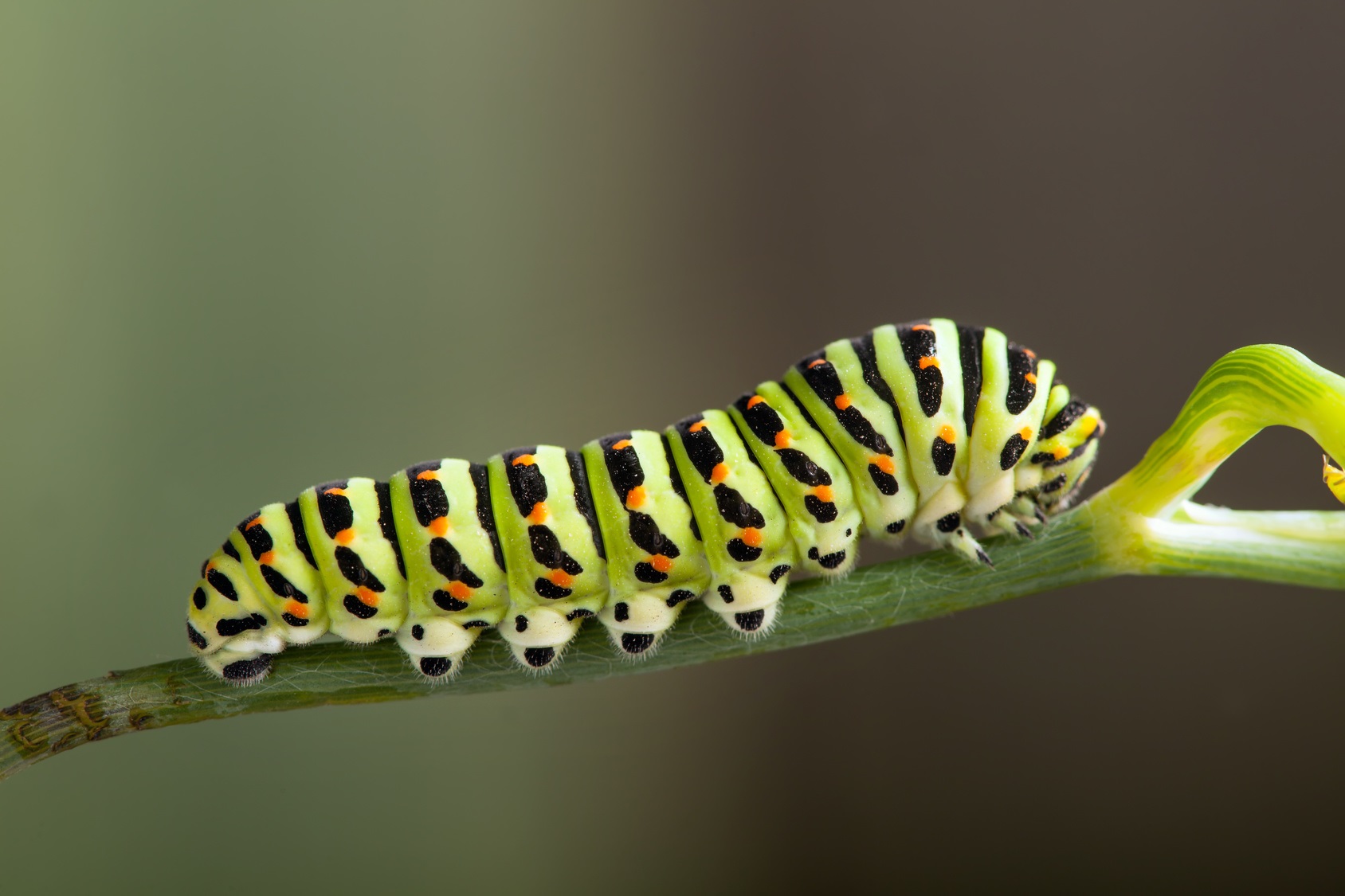

Latest News
What Insects Are Herbivores
Modified: January 22, 2024
Discover the Latest News on What Insects Are Herbivores. Learn about their feeding habits and how they impact the environment. Stay informed with the latest updates in the insect world.
(Many of the links in this article redirect to a specific reviewed product. Your purchase of these products through affiliate links helps to generate commission for Chicagolandgardening.com, at no extra cost. Learn more)
Table of Contents
Introduction
Welcome to the fascinating world of herbivorous insects! These incredible creatures play a vital role in shaping ecosystems and have a unique dietary preference for consuming plant matter. From tiny aphids to large caterpillars, herbivorous insects span a diverse range of species and have evolved fascinating adaptations to thrive on a plant-based diet.
Herbivory, the act of consuming plant material, is a feeding strategy that has evolved independently in many different insect lineages. While some insects may feed on a variety of food sources, herbivorous insects primarily rely on plants as their main source of nutrition. By extracting nutrients from plants, herbivorous insects have developed specialized digestive systems and a variety of feeding adaptations to efficiently acquire and process plant matter.
To better understand the world of herbivorous insects, it’s crucial to explore the different types of herbivorous insects, the unique adaptations they possess, and the important role they play in ecosystems. This article will delve into these aspects, providing a comprehensive overview of these intriguing creatures.
So join us on this educational journey as we explore the world of herbivorous insects and discover the wonders of their plant-based dietary habits.
Definition of Herbivores
Before diving into the specifics of herbivorous insects, let’s first understand what it means to be a herbivore. In the broadest sense, herbivores are organisms that derive their nutrients and energy primarily from consuming plant material. This can include leaves, stems, flowers, fruits, and even parts of plants such as seeds or nectar.
Herbivory is a common feeding strategy found across various animal taxa, ranging from insects to mammals. While herbivorous animals can include grazing mammals like cows or deer, this article will focus on the fascinating world of herbivorous insects.
Unlike carnivores or omnivores, which feed on animals or a combination of animals and plants, herbivorous insects have evolved specific adaptations to make the most of their plant-based diet. These adaptations include specialized mouthparts for feeding on plant tissues, efficient digestive systems, and unique mechanisms to counter the chemical defenses that plants use to deter herbivory.
It’s worth noting that while herbivorous insects primarily rely on plants for nutrition, some may also supplement their diet with other food sources such as fungi or algae. Nevertheless, plants remain the primary source of sustenance for these insects.
Understanding the definition of herbivores helps set the stage for exploring the world of herbivorous insects. With their unique feeding habits and adaptations, these insects have become masters at harnessing the resources provided by the vast diversity of plants found in ecosystems around the world.
Types of Herbivorous Insects
Herbivorous insects encompass a vast array of species, each with its own unique feeding habits and preferences. Here are some common types of herbivorous insects:
- Chewing Insects: Chewing insects, such as caterpillars and grasshoppers, have mandibles that allow them to consume plant material by biting and chewing. They may feed on leaves, stems, or other plant parts, consuming large portions of plant tissue.
- Sucking Insects: Sucking insects, like aphids and scale insects, have specialized mouthparts designed to pierce plant tissues and suck out the juices. They extract nutrients by inserting their stylets into plant cells and consuming the fluid.
- Galling Insects: Galling insects, such as gall wasps and gall flies, induce abnormal growths called galls on the plants they feed on. They manipulate plant tissues to form protective structures that provide them with both food and shelter.
- Miners: Miner insects, like leaf miners and stem borers, tunnel through plant tissues, creating pathways as they feed on the underlying tissues. They leave distinctive patterns like serpentine mines on leaves or tunnels within stems.
- Phloem Feeders: Phloem feeders, including aphids and leafhoppers, primarily consume the sugary sap found in the phloem, the nutrient-rich vascular tissue of plants. They have specialized mouthparts that allow them to access and feed on this sap.
These examples illustrate the diverse feeding strategies and adaptations that herbivorous insects possess. From chewing and sucking to inducing galls and mining through plant tissues, these insects have evolved remarkable ways to extract nutrients from plants and survive in their environments.
It’s important to note that herbivorous insects can specialize in feeding on specific plant species or have a broader diet, depending on their ecological niche and evolutionary history. This specialization can vary from species to species and can have significant ecological implications for both the insects and the plants they feed on.
Digestive System of Herbivorous Insects
The digestive system of herbivorous insects is highly adapted to efficiently process plant matter and extract nutrients. Unlike carnivorous or omnivorous insects, which primarily consume protein-rich animal tissues, herbivorous insects face the challenge of breaking down and utilizing the complex carbohydrates, fibers, and defensive compounds found in plant cells.
One key adaptation in the digestive system of herbivorous insects is the presence of symbiotic bacteria or enzymes that aid in the breakdown of plant materials. These symbiotic organisms produce enzymes, such as cellulases and hemicellulases, which can break down the tough cell walls of plants, releasing the nutrients trapped inside. The insects then benefit from these enzymatic activities by absorbing the resulting simpler sugars and other nutrients.
In addition to symbiotic organisms, herbivorous insects have specialized digestive structures to optimize the digestion process. For example, some insects, like caterpillars, have an elongated and highly convoluted midgut to enable the prolonged enzymatic digestion of plant material. This allows for the efficient extraction of nutrients before reaching the hindgut, where undigested residues are formed into waste products.
Furthermore, herbivorous insects possess adaptations to deal with the chemical defenses plants employ to deter herbivory. Many plants produce toxins, such as alkaloids or phenolic compounds, to deter or poison herbivores. In response, herbivorous insects have evolved detoxification mechanisms, such as specific enzymes or gut microorganisms, to neutralize or metabolize these toxins, enabling them to feed on these plants without harm.
It is important to note that the digestive systems of herbivorous insects vary greatly depending on their specific dietary preferences and feeding strategies. For example, insects that feed exclusively on plant sap may have specialized structures, such as stylets, to pierce plant tissues and access the nutrient-rich fluids within.
Overall, the digestive system of herbivorous insects showcases the remarkable adaptations that have arisen to overcome the challenges of extracting nutrients from plant material. These adaptations play a crucial role in the survival and success of herbivorous insects, allowing them to thrive in diverse habitats and exploit the vast resources provided by plants.
Adaptations of Herbivorous Insects
Herbivorous insects have evolved a wide range of adaptations that enable them to effectively feed on plant material and navigate the challenges posed by their herbivorous lifestyle. These adaptations are often diverse and specialized, allowing insects to exploit specific plant resources and survive in different ecological niches. Here are some notable adaptations of herbivorous insects:
- Mouthparts: Herbivorous insects possess a variety of mouthparts that are adapted to their specific feeding strategies. For example, chewing insects, like caterpillars, have powerful mandibles that allow them to consume plant tissues, while sucking insects, like aphids, have slender stylets to pierce through plant tissue and extract sap.
- Digestive enzymes: Herbivorous insects often host symbiotic bacteria or produce their own digestive enzymes to break down plant material. These enzymes, such as cellulases, help break down complex carbohydrates and fibers found in plant cell walls, enabling the insects to access nutrients that would otherwise be inaccessible.
- Detoxification mechanisms: Many plants produce chemical compounds to deter herbivory, but herbivorous insects have developed ways to counteract these defenses. They possess detoxification mechanisms, such as enzymes or gut bacteria, that can neutralize or metabolize plant toxins, allowing them to overcome these chemical barriers and feed on plants without harm.
- Camouflage and mimicry: Some herbivorous insects have adaptations that help them blend in with their surroundings or mimic other organisms to avoid detection by predators. This can include coloration patterns that resemble the plants they feed on or the ability to mimic plant structures, such as thorns or leaves, for protection.
- Gut microbiota: The gut microbiota of herbivorous insects plays a crucial role in their digestion and nutrient acquisition. These symbiotic microorganisms assist in breaking down complex plant compounds, aid in the digestion of cellulose and other fibers, and may even provide additional nutritional benefits to their insect hosts.
- Feeding specializations: Herbivorous insects can exhibit feeding specializations, focusing on specific plant species or plant parts. This specialization allows these insects to optimize their nutrient intake and exploit particular plant resources that other organisms may not be able to access.
These adaptations highlight the incredible diversity and resourcefulness of herbivorous insects. They have evolved distinct morphological, physiological, and behavioral traits that enable them to not only feed on plants but also overcome the challenges posed by plant defenses and variations in plant chemistry.
By honing these adaptations, herbivorous insects have successfully carved out their ecological niche and become integral components of ecosystems worldwide.
Examples of Herbivorous Insects
The insect world is filled with a multitude of herbivorous species, each uniquely adapted to feed on different types of plants. Here are a few fascinating examples of herbivorous insects:
- Monarch Butterfly (Danaus plexippus): The iconic monarch butterfly is famous for its migration and its reliance on milkweed plants. Monarch caterpillars feed exclusively on the leaves of milkweed plants, ingesting toxins that make them unpalatable to predators.
- Honeybees (Apis mellifera): While honeybees are primarily known for their role in pollination, they also have a herbivorous component to their diet. Worker bees gather floral nectar and transform it into honey, a carbohydrate-rich food source for the colony.
- Cabbage White Butterfly (Pieris rapae): Cabbage white butterflies are known for their preference for feeding on cruciferous plants, including cabbage, kale, and broccoli. The caterpillars of these butterflies can cause significant damage to these crops.
- Colorado Potato Beetle (Leptinotarsa decemlineata): This notorious pest feeds on the leaves of potato and other related plants. The larvae of the beetle can defoliate potato plants, leading to reduced crop yields.
- Aphids (Aphidoidea): Aphids are small sap-sucking insects that can infest a wide range of plants, including crops, ornamental plants, and trees. They use their specialized mouthparts to pierce plant tissues and consume the sugary sap.
- Leafcutter Ants (Atta spp.): Leafcutter ants are impressive herbivorous insects that cut leaves and carry them back to their nest. The ants then use the leaf fragments to cultivate a fungus, which they feed upon.
- Gypsy Moth (Lymantria dispar): Gypsy moth caterpillars are known for their voracious appetite and ability to defoliate a wide range of tree species. Outbreaks of gypsy moth can have significant ecological and economic impacts.
These examples represent just a fraction of the countless herbivorous insects found across various ecosystems. Each insect has its own unique evolutionary history, feeding preferences, and interactions with plants. Through their feeding habits, these insects have shaped the evolution of plants and contributed to the rich tapestry of life that exists in our natural world.
Interactions with Plants
The relationship between herbivorous insects and plants is a dynamic and complex one, characterized by intricate interactions that have shaped both organisms over millions of years. These interactions have played a significant role in the evolution of both plant defenses and insect feeding strategies.
Plants have evolved various mechanisms to protect themselves from herbivorous insects. These mechanisms include physical barriers such as thorns, trichomes, and tough outer layers, as well as chemical defenses such as toxic compounds and deterrent substances. Some plants even release volatile compounds to attract natural enemies of herbivores, utilizing indirect defenses to fend off herbivorous insects.
However, herbivorous insects have also evolved fascinating adaptations to overcome these plant defenses and exploit their resources. They may have specialized enzymes or gut microorganisms that detoxify plant toxins, or they may possess behavioral adaptations that allow them to selectively feed on less defended plant tissues.
Interactions between herbivorous insects and plants can have far-reaching ecological consequences. Apart from direct damage to plant tissues, herbivorous insects can also influence plant growth, reproduction, and community dynamics. For instance, some herbivorous insects have coevolved with specific plant species, forming mutualistic relationships where the insects obtain food and shelter, while the plants benefit from controlled herbivory for seed dispersal or pollination.
Furthermore, the presence of herbivorous insects can trigger a series of cascading effects in ecosystems. Their feeding activities can alter plant chemistry and induce changes in plant growth patterns. This, in turn, can impact other organisms that rely on those plants, such as predator-prey relationships or interactions with pollinators.
It is worth noting that not all interactions between herbivorous insects and plants are detrimental. Some herbivores are essential for pollination, as they inadvertently carry pollen while feeding on nectar or other floral resources. Additionally, some plants have evolved to rely on herbivorous insects for seed dispersal, serving as a means of dispersal for the insects as well.
Understanding the intricacies of these interactions is crucial for studying the functioning of ecosystems and conserving biodiversity. They highlight the delicate balance between plants and herbivorous insects and underscore the importance of preserving these interactions for the overall health and stability of ecosystems.
Importance of Herbivorous Insects in Ecosystems
Herbivorous insects play a crucial role in ecosystems, contributing to their functioning and supporting the overall balance of biodiversity. Here are some reasons why herbivorous insects are important:
- Pollination: Many herbivorous insects, such as bees, butterflies, and moths, inadvertently transfer pollen from one plant to another as they feed on nectar. This process facilitates pollination, which is essential for the reproduction of flowering plants and the production of fruits, seeds, and nuts that form the basis of many ecosystems.
- Seed dispersal: Some herbivorous insects aid in seed dispersal by consuming fruits or seeds and dispersing them to new areas through their feeding activities or when excreting the undigested seeds in a different location. This helps plants colonize new areas and maintain genetic diversity within populations.
- Nutrient cycling: When herbivorous insects consume plant material, they break it down into smaller particles and deposit organic matter on the ground through their droppings or when they die. This organic matter contributes to nutrient cycling, enriching the soil and providing nutrients for other organisms in the ecosystem.
- Food source for predators: Herbivorous insects are a vital food source for many predators, including birds, reptiles, amphibians, and other insects. They form part of the intricate web of interactions within food chains and provide a crucial energy transfer from plants to higher trophic levels.
- Ecological balance: Herbivorous insects play a role in maintaining the balance of plant populations within ecosystems. By feeding on plants, they can regulate plant growth, prevent the dominance of certain species, and promote biodiversity by creating opportunities for other plant species to thrive.
- Indicators of ecosystem health: The presence, abundance, and diversity of herbivorous insects can serve as indicators of ecosystem health. Changes in their populations can signal environmental disruptions, such as habitat loss, pollution, or climate change, which can have cascading effects on the entire ecosystem.
These examples emphasize the vital contributions of herbivorous insects to ecosystem functioning, biodiversity, and the overall health and stability of natural systems. Their interactions with plants, pollination services, seed dispersal, nutrient cycling, and roles within food webs illustrate their invaluable position within ecological communities.
Understanding and conserving these interactions is essential for maintaining the delicate balance of ecosystems and ensuring the resilience and sustainability of our natural environment.
Conclusion
Herbivorous insects are a diverse and fascinating group of organisms that have evolved remarkable adaptations to feed on plants. They play a crucial role in shaping ecosystems, from their interactions with plants to their contributions to pollination, seed dispersal, and nutrient cycling. The intricate balance between herbivorous insects and plants has shaped the evolution of both groups and has had cascading effects on the entire ecosystem.
Through their unique feeding strategies, herbivorous insects have developed specialized mouthparts, digestive systems, and detoxification mechanisms to overcome the defenses of their plant hosts. These adaptations demonstrate the remarkable resourcefulness and resilience of these insects in extracting nutrients from plant material.
The diverse types of herbivorous insects, such as chewers, suckers, galling insects, miners, and phloem feeders, highlight the variety of ways in which these insects have evolved to exploit different plant resources. Their adaptations allow them to occupy specific ecological niches and play vital roles in ecosystems worldwide.
Understanding and appreciating the importance of herbivorous insects is crucial for the management and conservation of ecosystems. These insects serve as pollinators, dispersers of plant seeds, contributors to nutrient cycling, and essential components of food webs. Their presence and abundance can also serve as indicators of the health and stability of ecosystems, providing valuable insights into environmental conditions and potential disturbances.
As we continue to study and explore the intricate interactions between herbivorous insects and plants, we gain a deeper appreciation for the incredible diversity and interconnectedness of the natural world. By preserving and protecting these interactions, we can contribute to the preservation of biodiversity and the sustainability of our environment for generations to come.

